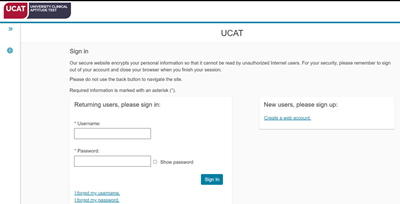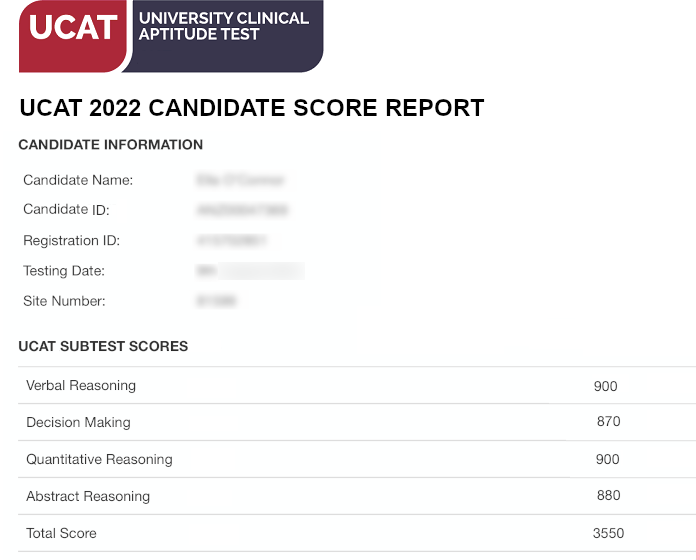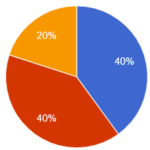What is the UCAT Exam?
The UCAT exam is the primary and most popular admissions test administered by medical schools and universities in the UK and across the world. The letters UCAT are an abbreviation for “University Clinical Aptitude Test”. The exam measures the your natural upper limit in various skills which are directly related to dentistry and medicine. Not everyone has the ability to become a dentist or doctor so the UCAT aims to filter out individuals who may be able to work hard but don’t naturally have the cognitive ability to perform to the level required when providing care and saving lives.
The UCAT exam is conducted online but only at approved exam centres. After entering the UCAT login the fun begins and the aspiring medical student has to work through five min-tests which aim to measure abilities in areas such as Verbal Reasoning, Decision Making, Quantitative Reasoning, Abstract Reasoning, and Situational Judgement.
Verbal Reasoning
44 questions 21 minutes- Reading and Interpreting Medical Literature
- Communicating Effectively
- Critical Evaluation of Evidence
- Patient Histories
Decision Making
29 question 31 minutes- Diagnosing Patients
- Treatment Planning
- Ethical Decision Making
- Emergency Situations
- Resource Management
Quantitative Reasoning
36 questions 25 minutes- Data Interpretation and Analysis
- Treatment Planning
- Evidence-Based Medicine
- Clinical Rotations
Abstract Reasoning ....
50 questions 12 minutes- Interpreting Medical Images
- Analyzing Research Data
- Monitoring Disease Progression
- Developing Treatment Plans
Situational Judgement Test
69 questions 26 minutes- Ethical Decision-Making
- Teamwork and Collaboration
- Stress and Time Management
- Leadership
UCAT Sections
Verbal Reasoning Subtest
The Verbal Reasoning subtest assesses your ability to read and think carefully about information presented in passages and to determine whether specific conclusions can be drawn from information presented. You are not expected to use prior knowledge to answer the questions. Check out Verbal Reasoning strategies to score highly in this section.
Decision Making Subtest
The UCAT Decision Making section tests your ability to apply logical reasoning, evaluate arguments, and analyze statistical data. This crucial part of the UCAT exam can be challenging if you’re unprepared. Enhance your skills and boost your confidence by practicing UCAT Decision Making questions regularly. Check out Decision Making strategies to score highly in this section.
Quantitative Reasoning Subtest
The UCAT Quantitative Reasoning section tests your ability to analyze numerical data quickly and accurately. This part of the UCAT includes multiple-choice questions that must be answered assessed quickly and answered using your superior numeracy skills. Check out Quantitative Reasoning strategies to score highly in this section.
Abstract Reasoning Subtest
UCAT Abstract Reasoning subtest evaluates your ability to identify patterns and relationships in abstract shapes. It challenges you to think critically, adapt quickly, and avoid distractions that could lead to incorrect conclusions. This section measures your capacity to generate hypotheses and continually reassess your judgments. Check out Abstract Reasoning strategies to score highly in this section.
Situational Judgement Subtest
The UCAT Situational Judgement section evaluates crucial attributes for medical studies and practice, such as empathy, adaptability, resilience, teamwork, and integrity. Gain insights into how these skills are assessed and why they are essential for a successful medical career. Check out Situational Judgment strategies to score highly in this section.

UCAT Login Page
The UCAT (University Clinical Aptitude Test) login page is the gateway for students to access their examination details and results. The page is pretty self-explanatory and if you don’t have an account provides you with the option to register. You’ll be presented with your personalised dashboard from where you can schedule your test, get details regarding the UCAT examination, and view your results after completion. The site itself and the login page provide important announcements and updates, helping candidates stay informed about critical deadlines and any changes to the examination process.
UCAT Timings
Timing of the UCAT exam and its subtests is a vital component of scoring highly. Preparation and performance under this type of stress is essential. The best way to improve is under the pressure of time but before you can practice in this way you firstly need to work out exactly how to do each type of question in each subtest of the UCAT. Once the aspiring medical student has mastered the question types without the pressure of time, practice needs to be timed with a focus on speed. It’s a good idea to work out how long each type of question takes so you can allocate your time intelligently since some types of questions may take you 5 times longer but provide the same mark. After you’ve managed to accurately complete a mock subtest within the time limits the next step will be to actually conduct multiple full mocks of the subtests and the complete UCAT exam.


UCAT Bursary
The UCAT bursary is designed to help students from low-income backgrounds by covering the cost of the test. The eligibility criteria for the bursary typically include being in receipt of certain benefits or meeting specific income thresholds. The bursary application process is straightforward, but timing is crucial to ensure that students can benefit from it.
The UCAT testing cycle usually begins in early July and runs through September. Therefore, students need to be aware of the bursary application deadlines to align their financial support with their test booking.
Applications are best made as soon as it is possible to take maximum benefit. This allows plenty of time to prepare without having to worry about the finances. Any issues can also be resolved in a timely fashion and the UCAT can then be booked at an appropriate date. Expect the application to take a few weeks during which time the UCAT consortium will review submitted documentary evidence to confirm eligibility. Make sure you to review the full application process at the official website here.

UCAT Scores
All of the UCAT sections are scored from 300 to 900 apart from the Situational Judgement section which is placed in bands from 1 to 4. This means the highest possible score is 900*4=3600 and the lowest score is 300*4=1200. Universities filter students out on both the UCAT score and the Situational Judgement band achieved, for example a student with a score of 3000 but a band 3 will be rejected in the same way as a student with a score of 2000 but a band 1.
Once the final UCAT exams have been sat the official UCAT percentiles are published (check out the official UCAT Exam Score page where you can find 2023 deciles and older). This provides universities with the numbers they need in order to estimate where their cut-offs should be and how many interviews are required in order to fill their places. Some universities will use actual UCAT percentiles rather than the raw UCAT scores – others will use the percentiles to determine the cut-off UCAT scores.
You need to have as much information as possible regarding what the cut offs are for the universities you are hoping to get into. From your UCAT practice you should have a pretty good idea of where you sit and will need to adjust your expectations accordingly. Make sure that both what you can reasonably expect to achieve is above the assumed cut-off marks of the medical schools you’re applying to. Keep in mind that medical schools will change their cut-off levels each year and possibly even during the admission process simply because there are too few or too many students – there may be more budget for places or possible even a budget cut – the higher your UCAT score the safer you are and the more options you’ll have.
The UCAT exam and its scoring is used to ensure that the aspiring medical professional has the tools necessary to complete the course. A-Levels provide the proof that the student is able to work hard and the medical school interview (MMI interview) provide evidence that the student is a good fit for the professional. It’s a long road but it’s worth it.
UCAT Score Convertor
Use the convertor below to work out what percentile you would be according to the 2023 results:
Find out if you are ready to sit the exam by using our FREE UCAT Readiness Questionnaire.







